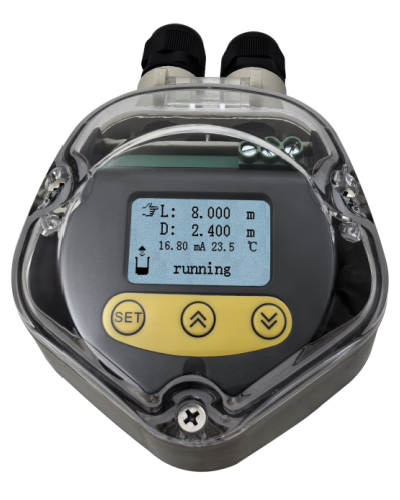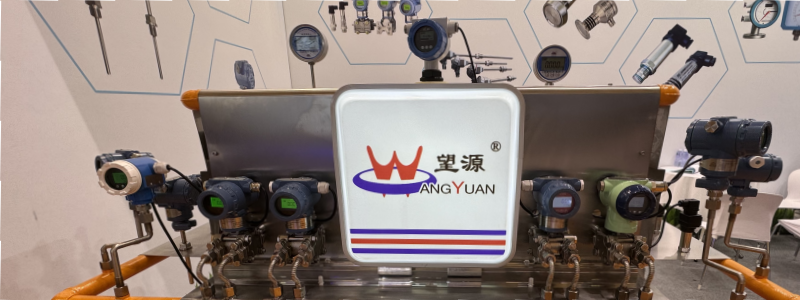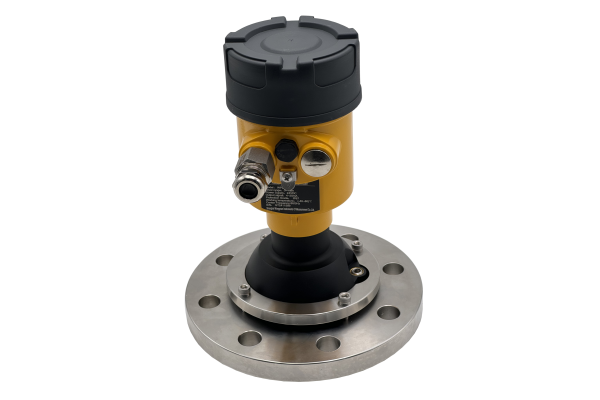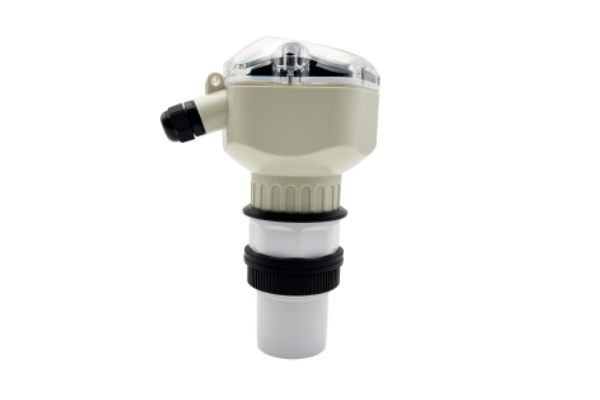Non-contact level measurement is one of the essential technology in industrial automation. The approach enables monitoring of liquid or solid levels in tank, container or open channel without physical interaction with medium. Among the most widely used non-contact methods are ultrasonic and radar level meters. If user would like to apply non-contact measure on level control, understanding of the operation of ultrasonic and radar type level gauges helps make appropriate selection for particular scenario.
Principle of operation
Ultrasonic level gauges operate by emitting high-frequency bursts of sound waves to find range from sensor to surface of the liquid/solid medium. These waves travel through air, reflect off the material surface, and return to the sensor. The distance can be determined by time spent on wave’s trip. Therefore the instrument is deployed at a distance right above medium surface, without any part having to be directly touched or submerged in the medium.
Radar level gauges utilizes electromagnetic waves (microwaves) instead of sound to determine the medium level of liquid or solid. Similarly microwave signals are emitted towards medium surface then reflected and received back to the instrument. During the process there is also no physical contact between instrument body and medium. Through recording time of flight of wave signals, distance from instrument to the material surface can be calculated.
Level measurements of the two types share the same formulas:
D = (C*T)/2
L = H - D
Where,
D: Distance from medium surface to instrument
C: Velocity of sound(for ultrasonic)velocity of light(for radar)
T: Time interval from emission to reception
L: Medium level to be measured
H: Height from vessel bottom to instrument

Differ from common contact-based instruments, elimination of physical contact with the substance, ultrasonic and radar technologies excel in level control of corrosive, viscous, or hazardous materials that could damage or clog the wetted components like floats, probes, or impulse lines. Installation is simplified since the devices are mounted externally and maintenance and downtime requirement are often kept to minimal due to the non-invasive design. Industries like chemical processing, water treatment, and food production can greatly benefit from ultrasonic and radar non-contact level sensors for their versatility and reliability among process controls of liquid, fluid, slurry, and solid across diverse tank geometries.
Comparison between ultrasonic and radar
Ultrasonic level meter is easy for installation and requires minimal setup. Compared to radar level meter, the ultrasonic one usually costs less and is therefore preferred in applications with budget constraints. However, performance of ultrasonic instruments are more subject to environmental effects of dust, foam, air turbulence and extreme temperature and humidity that could absorb or deflect sound waves and cause lost wave issue.
Radar level gauge, on the other hand, is known for high precision, long range and proven reliability in harsh operating environment. It is less susceptible to factors above that trouble ultrasonic technology. Nevertheless it means radar products are generally more costly. Dielectric constant is another important factor for radar measurement. Low dielectric materials could weaken reflection of echo signal leading to unstable or lost measurement.
In summary, when user decides to apply non-contact level measurement, ultrasonic sensor would be ideal for moderate working condition and budget-conscious project while radar is qualified for more challenging environment and pursuit of high standard measurement. In any case, it is paramount to ascertain that the medium characteristics and the environment, as well as structure of the process system, are conducive to implementation of the desired contactless measurement method.
Installation notes for contactless instruments
- ✦ Installation location should be as far away as possible from the noise source
- ✦ Rubber gasket can be used for mounting under vibration environment
- ✦ Distance from sensor to highest estimated level should be great than measurement blind zone
- ✦ Sensor position ought to keep certain distance with wall of container according to emitting angle
- ✦ Measurement area should be free from obstacles which is likely to cause signal interference such as step ladder or crossbeam
- ✦ For solid medium measurement, mounting position should avoid material feed opening area
- ✦ It is best to avoid great temperature fluctuation at instrument installation place
- ✦ Sensor probe shall be perpendicular to medium surface to secure best performance

Shanghai Wangyuan is an experienced instrumentation manufacturer over 20 years supplying ultrasonic and radar contactless level sensors as well as other types of level measuring instruments. Please feel free to consult us with your inquiries on non-contact level measurement products.
Post time: Mar-11-2025





